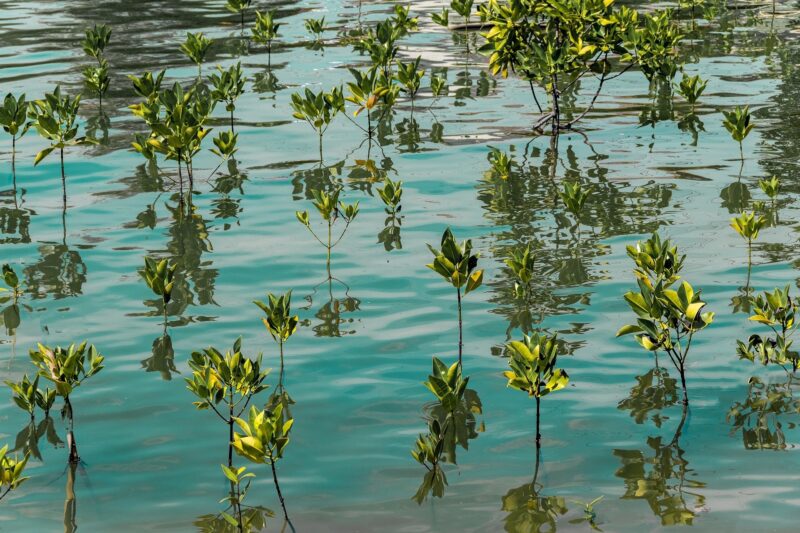Climate change and small islands: more scientific evidence of high risks
Adelle Thomas, Rose Martyr-Koller, Patrick Pringle
Share

We also found that further scientific research across disciplines is needed to understand how these island nations will experience and respond to the escalating challenges of climate change.
In our article, published in “Annual Review of Environment and Resources”, we detailed the different factors that must be considered to gain a deeper understanding of the complex relationship between climate change and SIDS, drawing from over 140 recent scientific publications to consolidate the most up to date information about SIDS and climate change, spanning diverse fields of literature. We assessed patterns of hazards, exposure, and vulnerability; impacts and risks; awareness and knowledge; adaptation planning and implementation; mitigation; loss and damage; and climate justice.
Patterns of hazards, exposure, and vulnerability
The IPCC Fifth Assessment Report laid out a framework to understand the risks that climate change presents. Basically, risk is determined by the interaction between hazards, exposure and vulnerability. While SIDS are not a homogenous group, island state nations across the world do have similar broad characteristics that lead to high levels of risk.
Hazards associated with the ocean and cryosphere — including sea level rise, tropical cyclones, and marine heatwaves — are of particular concern for SIDS since many of these nations have close connections between human communities and coastal environments. But the impacts are not just limited to these changes in the ocean: SIDS are also threatened by a broad range of hazards such as higher air temperatures and changes in rainfall patterns. Climate change is intensifying these hazards, leading to higher levels of risk as global average temperatures increase.
In many island nations, significant portions of communities and assets are located in coastal zones, resulting in high levels of exposure to escalating hazards. Many SIDS also have large ocean territories, meaning that marine resources and biodiversity are similarly highly exposed to climate change.
Vulnerability is a complex concept, affected by economic and social characteristics as well as the ability of SIDS to adapt to climate change. Sectors that often make up the bulk of national GDP of an island country – such as tourism, fisheries and agriculture – are largely reliant on conducive environmental conditions and are vulnerable to climate change.
Single disasters often have widespread and long-term effects for SIDS, eroding adaptive capacity and socio-economic stability. An example is Hurricane Maria in 2017 that caused damages in Dominica totalling over 225% of the country’s GDP, and displaced the entire population of Barbuda. Such disasters make it harder for SIDS to allocate resources and finances to sustainable development, and increases vulnerability to other climate impacts.
Current impacts and projected risks
SIDS already experience significant impacts from a wide range of climate hazards. Sea-level rise has caused the loss of several low-lying Pacific Islands, along with severe erosion. Coastal aquifers – often the primary source of freshwater for islands– are facing decreased water quality from salinisation due to both sea-level rise and increased flooding from coastal storms. Extended periods of drought threaten water security in the Caribbean. Changes to ocean conditions have led to declines in fisheries across the Atlantic, Indian Ocean, Mediterranean and South China Seas region.
Key projected risks for SIDS include more of the same, from increased loss of land from sea-level rise, flooding, ecosystem degradation and freshwater stress, to tropical storms of increased intensity, and extreme water level events that may double by 2050. All of these impacts will have significant negative repercussions for SIDS, with larger economic impacts than the global average, and increased risks for sectors dependent on coastal ecosystems.
Adaptation planning and implementation
The past decade has seen a growth of adaptation planning and implementation activity in SIDS, formalising our understanding of climate change impacts and setting out practical responses. While acknowledging this progress, we have identified a number of areas where adaptation planning needs strengthening. These include:- improving the connectivity of adaptation planning to subnational and sectoral planning and implementation efforts;
- strengthening governance and institutions;
- enhancing monitoring, evaluation and learning in relation to these plans and
- improving flows of decision-relevant information through knowledge brokering.
We also examine a number of prominent adaptation options, the barriers to implementing these and limits faced as global temperatures increase.
Loss and damage
SIDS have led advocacy efforts to include loss and damage in the international climate change negotiations since the very beginning of the UNFCCC. Research on loss and damage and SIDS has focused on how the issue has developed in the UNFCCC, island-specific policies and mechanisms that address loss and damage and incidents of both economic and non-economic loss and damage that have been experienced or are projected to occur.
However, we found a paucity of SIDS-specific research, with significant literature gaps in evidence-based strategies to avert, minimise and address loss and damage and in SIDS-specific theoretical framings of loss and damage concepts. There is also a gap in studies that comprehensively identify existing and projected loss and damage in SIDS.
Climate justice
Climate justice is an area of research that frames climate change as a political and ethical issue, and not solely as a problem underpinned by environmental change. SIDS-focused research in climate justice has centered on the shortcomings of existing climate actions to prevent negative climate impacts that affect island states.
The so-called ‘North-South’ divide highlights the difference between developed and developing countries in identifying and implementing ambitious actions that would limit the risks that climate change presents. This divide is exemplified by the contrast between SIDS advocating to limit global average warming to 1.5°C and pushback from developed countries to keep to this warming limit, despite the existential risks that increased warming presents for SIDS.












